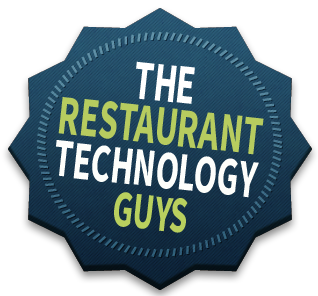
It’s no secret that the POS landscape is changing. We have written about some of the different options that restaurant owners are facing today. Some owners are holding on to traditional POS systems while others are seeking out newer, more streamlined services. Not only are the POS devices going mobile, there are more options than ever before for consumers to place orders. Looking at the different options and trying to weigh through the different setups and components is an incredibly time consuming and intimidating task. But which options truly fit your brand?
In order to answer that question, you have to understand the different options, what they mean, and what value they bring to consumers and to the concept itself. Let’s start by identifying the options out there and laying some of that groundwork.
Traditional POS: The traditional POS is the system that almost every restaurant owner knows. There is a hardwired terminal at either a walk-up counter or at a server station that allows servers to complete transactions. While still relevant and incredibly powerful, these systems are quickly being replaced by mobile solutions. However, it provides restaurants with tools that many servers are familiar with and allow for quick transaction times.
Who would use this? Traditional POS is the PB&J of the restaurant world. It’s tried, true, and while it doesn’t necessarily provide the fancy bells and whistles of some of the newer options, it’s going to work. This is applicable in almost every setting except for mobile locations like food trucks.
Web Ordering: Many restaurants have become very web-savvy, rightfully so. As the average consumer moves their life to the web, why would a staple need like FOOD not move with them? Web ordering is incredibly valuable to both the consumer and the restaurant for several reasons. First, the consumer has the ability to order ahead which accommodates today’s perpetually busy lifestyle. Next, it allows for consumer interaction to see exactly what they ordered and to make sure that large orders (think office lunch runs) are accurate. For the restaurant, it allows management a timeline to see what is coming in and gives them a pre-determined window to play in. When the customer is sitting waiting for their order, the kitchen is racing the clock to get the order out correctly in the shortest amount of time. With web ordering, the kitchen may have an additional 10-15 minutes to complete the order. It also gives the manager to link email addresses to specific email addresses and phone numbers for additional marketing opportunities.
Who would use this? Web ordering would work best with restaurants that already try to turn customers fairly quickly. It wouldn’t be well suited for concepts that are attempting to have a more upscale feel. People that are ordering from the Internet aren’t in it for the experience. Rather, these consumers prioritize speed over experience.
Kiosk Ordering: Kiosks have been skirting the realm of mainstream adoption for some time, but we are seeing more and more kiosks find their way into a wider variety of concepts and industries like air travel. Generally speaking, kiosks streamline the ordering process by offering guests an easy-to-use interface at a stationary location in the restaurant. For all intents and purposes, kiosks can be equated to a virtual counter jockey. Where the value is derived, however, is in the costs. Kiosk systems have an initial cost, but then only require updates and occasional repair. When looking at a per-hour cost over the course of a year, the kiosk is much more cost effective. Because of this cost savings restaurants can deploy more kiosks to help reduce wait times, which can result in more business.
Who would use this? Kiosks, in essence, are the same as web ordering. In its simplest form, you are putting technology in between consumers and their food. With that, concepts that were well suited for web ordering could also easily implement a kiosk in their restaurant. However, kiosks are even more versatile than that. Take a walk-up restaurant that offers a delicious dessert like milkshakes. Many people may want to walk up and order just a milkshake, not an entire meal. A kiosk would be very well suited for quick orders like that to be able to accommodate a specialty offering like milkshakes. Kiosks can also be used to take payments on call-ahead orders. The opportunities for kiosks are endless, but are best utilized in quick-service or walk-up establishments.
Tableside (Server-facing): In North America, one area that has yet to really catch on to the current trend of technology is at the server level. However, there are many benefits of having a tableside technology in your restaurant. Currently, servers take notes in a pad when the patron orders, then transfers this order into the POS at the server station. The order is then sent to the kitchen. This gives the server a few opportunities to incorrectly transcribe the order: when they take the order and when they put the order into the computer. Oftentimes, servers are rushed and may forget to ask for upsells, add-ons, or specials. By putting technology in front of them, you are benefitting in several ways. First, the server is taking the order to directly be sent to the kitchen. It eliminates one step that could result in an error. Second, you can create roadblocks based on the order that would prompt the server to ask for upsells. Finally, you are using servers’ time more efficiently by not requiring them to make unnecessary trips to the server station.
Who would use this? This technology could be utilized in almost every dining experience. Clearly, there’s benefit to using the technology in a sit-down environment, but there are also opportunities to use this technology in other fast-casual or quick-service concepts as well. Restaurants could also use this technology in a line-busting capacity, on a patio, in the bar area, or curbside. The opportunities are many.
Tableside (guest-facing): If you’ve been following the news lately, there is a lot of hype about the technology at the table that allows guests to perform a variety of tasks including paying the bill, ordering, playing games, etc. Companies like Chili’s and Applebee’s have already rolled out the technology in many of their locations, and many others are tinkering with the idea. Putting technology at the table satisfies several needs. First, it streamlines the dining-out process. It frees your waiters and waitresses up to tend to customers who are still eating. It gives you additional marketing opportunities. It’s statistically proven that foods with pictures on the menu sell best. With a tablet at the table, you can have a high-res photo that is virtually free to change, unlike paper menus that are costly to reprint. You can highlight certain items based day, time, season, etc. It gives you the most opportunity to customize your menu to your audience. It also gives you an additional opportunity to monetize your restaurant. By charging a nominal fee for playing games, Internet access, etc., you can get more money from your restaurant than ever before.
Who would use this? Guest facing tablets at tables could go anywhere. Fast casual restaurants can add games and songs to help engage customers who may have children, who may be dining alone, or who may be want to engage in a little friendly competition with friends. Five-star, fine-dining restaurants could deploy this technology to help reinforce the brand with luxurious photos of food or other restaurant branding and the convenience of paying at the table.
Now that everyone is on the same page, be sure to check back soon to see how you can utilize each of these in your restaurant to help grow your business!

[…] environment with moisture, heat, grease, open flame, and many greasy, grimy hands. However, as menus are evolving, technology is making the process much more streamlined and efficient. The restaurant owner, […]